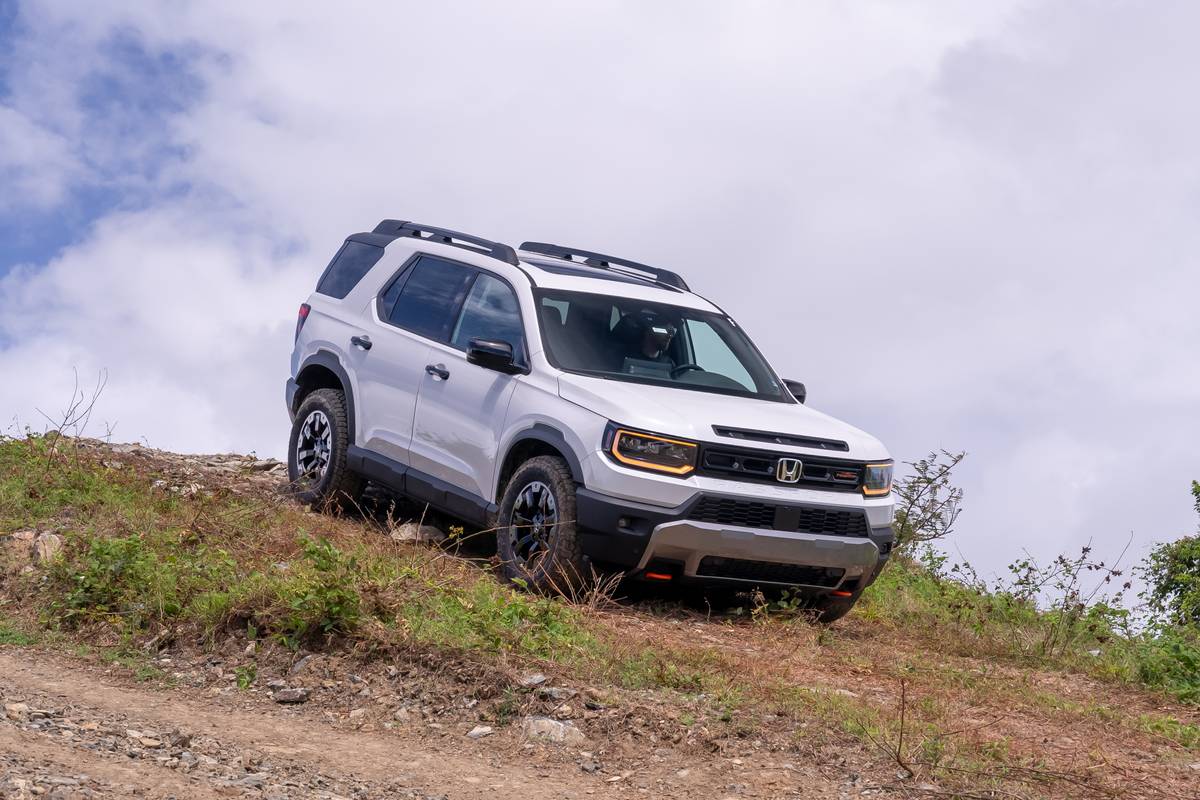2002 Pontiac Firebird: What's New
Vehicle Overview
The Pontiac Firebird and its Chevrolet Camaro cousin will not be produced after the 2002 model year. Both of these rear-wheel-drive throwbacks to the muscle-car era date back to 1967 and were last redesigned for the 1994 model year. Firebird sales have been flat since then, though the Camaro while sinking at a similar rate has been more popular over the years. During 2001, Pontiac sold only 25,743 Firebirds, which represents a 17 percent drop from the previous year, according to Automotive News.
Taken together, Firebird and Camaro sales in recent years have amounted to far less than half of the totals racked up by the Ford Mustang, GMs long-time archrival in this league. Though dramatic and eagerly sought after by fans of this sort of automobile, they no longer capture the fancy of young people like they did in the past.
All Firebird models gain some standard equipment for 2002, including a power antenna and power windows, door locks and mirrors. A power-steering cooler is installed in models equipped with V-8 engines. The Formula coupe adds an audible theft-deterrent system, a removable hatch roof with sunshades, remote keyless entry and a six-way power drivers seat.
The hatchback coupe still comes in base, Formula and Trans Am forms, while the convertible is offered in base and Trans Am trims. The base model has a V-6 engine, while a 5.7-liter V-8 powers the Formula and Trans Am editions. Topping the performance lineup is the Pontiac Firehawk, modified by SLP Engineering, which has been fitted for 2002 with a stronger-than-before 345-horsepower V-8 power plant. SLP stands for Street Legal Performance, which spells out the companys objective: to produce street-legal, high-performance versions of regular production automobiles, including the Firebird and Camaro.
Pontiac is producing close to 2,000 35th Anniversary Collector Editions of the Trans Am to mark the Firebirds 35-year history. In addition to the WS6 Performance and Handling Package, which includes a Ram Air Induction System and a 325-hp V-8 engine, the Collector Editions get special yellow paint with screaming chicken graphics that are reminiscent of the hood designs on 1970s and 80s models.
Exterior
Even though the Firebird is shaped much like the Camaro, the coupe and convertible are known for their twin-port grille up front, different taillights and other distinctive exterior features. The Firebird is the more aggressive-looking of the pair, which is no surprise, because Pontiac has long prided itself on being the sportiest division of the GM family. Most body panels are formed from composite material that is impervious to rust or corrosion. The Firebird rides a 101.1-inch wheelbase, measures just over 193 inches long and stands less than 52 inches tall.
Removable T-top roof panels are available for coupes, while convertibles have a power top and glass rear window with a defogger. The base model has 16-inch P235/55R16 tires on cast-aluminum wheels. Formula Firebirds include a performance suspension, limited-slip differential and P245/50ZR16 tires. A Sports Appearance Package for the base model includes a distinctive chin spoiler, rocker-panel extensions and a deeper rear valance to give drivers of the V-6 some of the image of the V-8 model. Trans Ams with the WS6 option package can be fitted with 17-inch tires.
Firehawks have a unique composite hood with twin scoops and heat tractors, an upgraded suspension and five-spoke aluminum wheels with Firestone Firehawk 17-inch tires. Firehawk options include chromed wheels, either a Bilstein ultra-performance or a 1LE suspension, and an Auburn high-torque performance differential. The basic Firehawk package lists for $3,999 more than the price of a Trans Am.
Interior
Traditional cockpit layouts dont always result in the most pleasant experience. In theory, Firebirds carry four occupants on cloth-upholstered bucket seats up front and a folding rear seat. Realistically, the cockpit is cramped and seats are low to the ground, making it somewhat difficult to enter and exit. The dashboard offers a full complement of gauges. Cargo space in the coupe isnt bad: 33.7 cubic feet with the rear seat folded and 12.9 cubic feet with the seat up.
The base model has standard air conditioning, cruise control, a tilt steering wheel, tachometer, CD player, remote hatch release, automatic headlights and a theft-deterrent system. The convertible comes with power windows, door locks and mirrors; a leather-wrapped steering wheel, gearshift lever and handbrake; a six-way power drivers seat; and a Monsoon stereo system. The Formula model also gets leather-wrapped interior items, a Monsoon system, and power windows, door locks and mirrors. And the Trans Am comes with a six-way power drivers seat, leather upholstery and remote keyless entry.
Under the Hood
The base model uses a 200-hp, 3.8-liter V-6 engine that mates with a five-speed-manual or four-speed-automatic transmission. Both the Formula and Trans Am models use a 5.7-liter Gen III LS1 V-8, derived from the Chevy Corvettes engine, which produces 310 hp a gain of 5 horses this year, compliments of a new camshaft and intake manifold. The WS6 Ram Air option comes complete with a functional hood scoop and is available only on the Trans Am, which boosts output to 325 hp.
Stepping even further up the line is the SLP Firehawk option. This version is modified by the aftermarket company SLP Engineering and includes a 345-hp, 5.7-liter V-8 engine, a special hood, tauter suspension, special trim and 17-inch tires. Firebirds with V-8 power have a standard four-speed-automatic transmission or can be equipped with a six-speed manual at no extra charge. The six-speed-manual gearbox can be fitted with an optional Hurst Shifter that produces quicker, more positive shifts. A V-6 Performance Package includes a Torsen limited-slip differential, dual exhaust outlets and a revised axle ratio.
Safety
All-disc antilock brakes are standard, and traction control is optional. Side-impact airbags are not available.
Driving Impressions
Essentially the leftovers from a different era, the Firebird has long been known for its stiff ride quality, snug cockpit, noisy operation and gas-guzzling V-8 engines, but the V-6 version is tamer. In fact, all models are more civilized than they used to be.
The Firebird, especially the Trans Am version, promises an unabashedly vigorous driving experience. It delivers on that promise, even though you have to accept a few drawbacks along the way. Unless youre an ardent admirer of cars of this ilk, youd probably be happier in a more refined and contemporary vehicle.
| Reported by Jim Flammang for cars.com From the cars.com 2002 Buying Guide |
Featured stories

This or That: 2026 Honda Passport TrailSport Elite Vs. 2025 Toyota 4Runner TRD Off-Road Premium


2025 Porsche Panamera GTS Review: Continental Cruiser

